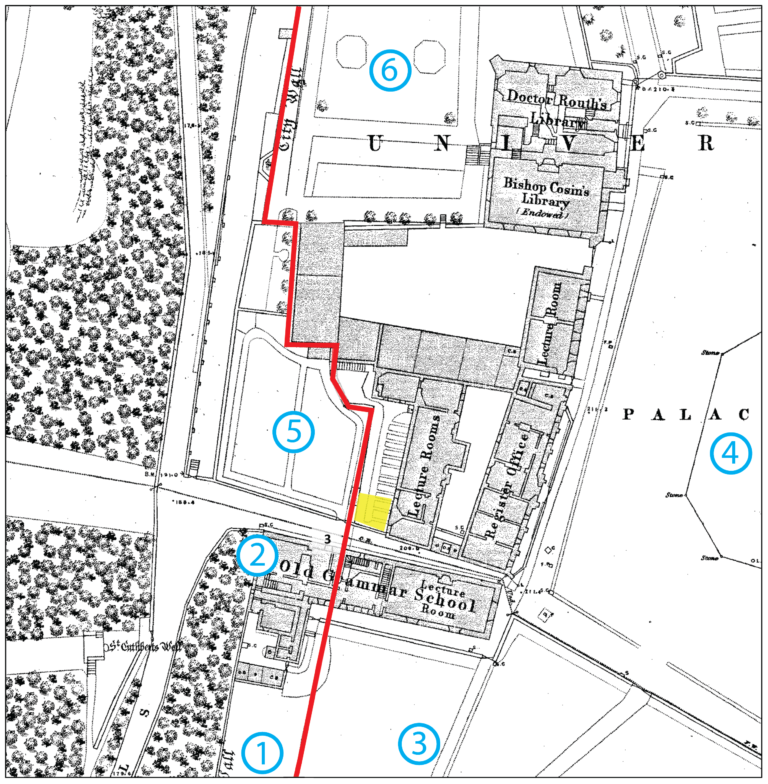Home / History / Archaeology / Archaeology and the Battle of Dunbar 1650: From the Scottish Battlefield to the New World / Earlier claims and discoveries
This article is from the free online
Archaeology and the Battle of Dunbar 1650: From the Scottish Battlefield to the New World


Reach your personal and professional goals
Unlock access to hundreds of expert online courses and degrees from top universities and educators to gain accredited qualifications and professional CV-building certificates.
Join over 18 million learners to launch, switch or build upon your career, all at your own pace, across a wide range of topic areas.

 Location of archaeological features and finds around the excavation site on the 1857 Ordnance Survey plan of Durham City. The red line shows the most likely line of the medieval castle wall; the yellow square is the burial site. Base map © Crown Copyright and Landmark Information Group Limited (2019). All rights reserved. (1857).
Location of archaeological features and finds around the excavation site on the 1857 Ordnance Survey plan of Durham City. The red line shows the most likely line of the medieval castle wall; the yellow square is the burial site. Base map © Crown Copyright and Landmark Information Group Limited (2019). All rights reserved. (1857).






